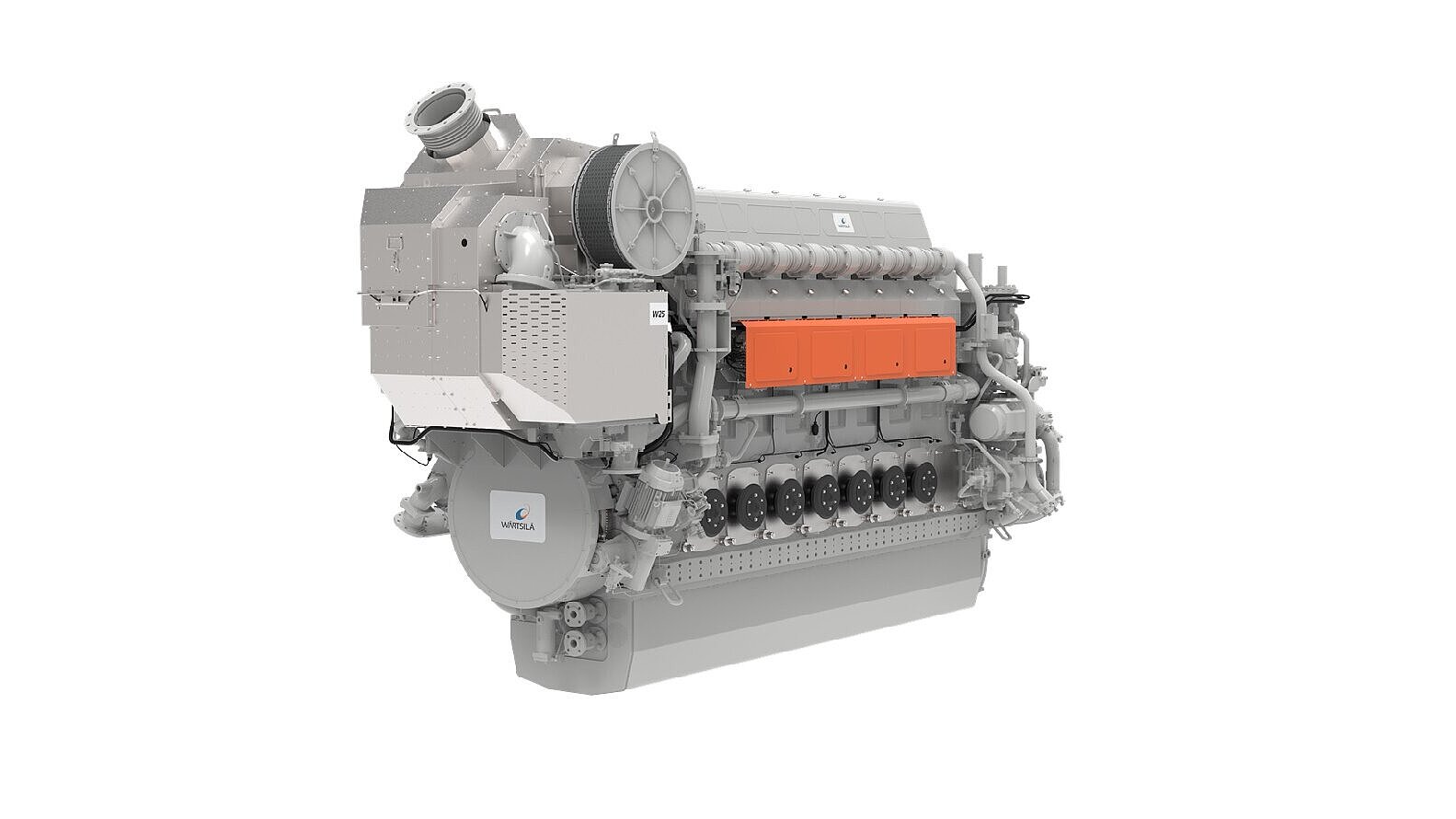
Wärtsilä announces new methane reduction technology

Wärtsilä’s NextDF technology will cut methane emissions from the Wärtsilä 25DF engine range (Source: Wärtsilä)
Helsinki-based Wärtsilä has unveiled new NextDF technology developed to cut methane emissions on the Wärtsilä 25DF dual-fuel engine. When running on LNG, the new setup reduces methane emissions to less than 2% of fuel use across all engine load points, the company has revealed, and can achieve a 1.1% level over a wide range of engine loads.
Nitrogen oxide emissions are also reduced as compared with the standard Wärtsilä 25DF unit, the company said. And this engine already has NOx emission levels below IMO Tier III.
LNG is seen as an important transition fuel in the drive to develop new carbon-neutral and carbon-free marine fuels. However, methane slip – a process in which a small amount of the chemical is not burnt in the engine combustion process – is a significant drawback because methane is many times more dangerous as a greenhouse gas than carbon dioxide. A number of initiatives are in progress, therefore, to tackle the issue.
The danger of unburnt methane is being recognised in new fuel regulations. It is due to become a factor included in the IMO’s carbon intensity indicator, and will be taken into account in the European Union’s Emissions Trading System from 2026, and in the FuelEU Maritime regulation from 2025.
Commenting on the NextDF technology, Wärtsilä Marine’s vice president of Power Supply, Stefan Nysjö, said: “Enhancing dual-fuel technology to further reduce methane emissions will have a major impact on the long-term viability of LNG as a marine fuel. Our work around reducing methane slip and GHG emissions is part of Wärtsilä’s effort to continuously improve efficiency and reduce emissions of our products. This innovation is one more very important step along the road to decarbonisation.”
The Wärtsilä 25DF dual-fuel engine is designed for small merchant vessels, tugs, dredgers, fishing vessels, and offshore support ships.
